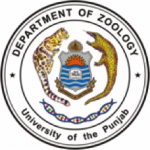Milk Profile of Marecha Camel (Camelus dromedarius) Affected by Stage of Lactation and Pregnancy
Milk Profile of Marecha Camel (Camelus dromedarius) Affected by Stage of Lactation and Pregnancy
Asim Faraz1*, Nasir Ali Tauqir2, Hafiz Muhammad Ishaq1, Muhammad Arslan Akbar3, Muhammad Abubakar Sufyan1, Abdul Waheed1, Muhammad Usman Saleem4, Muhammad Shahid Nabeel5, Morteza Bitaraf Sani6, Amal AlKharusi7, Samira Jebahi8 and Ayman Balla Mustafa9
ABSTRACT
To share on other social networks, click on any share button. What are these?








